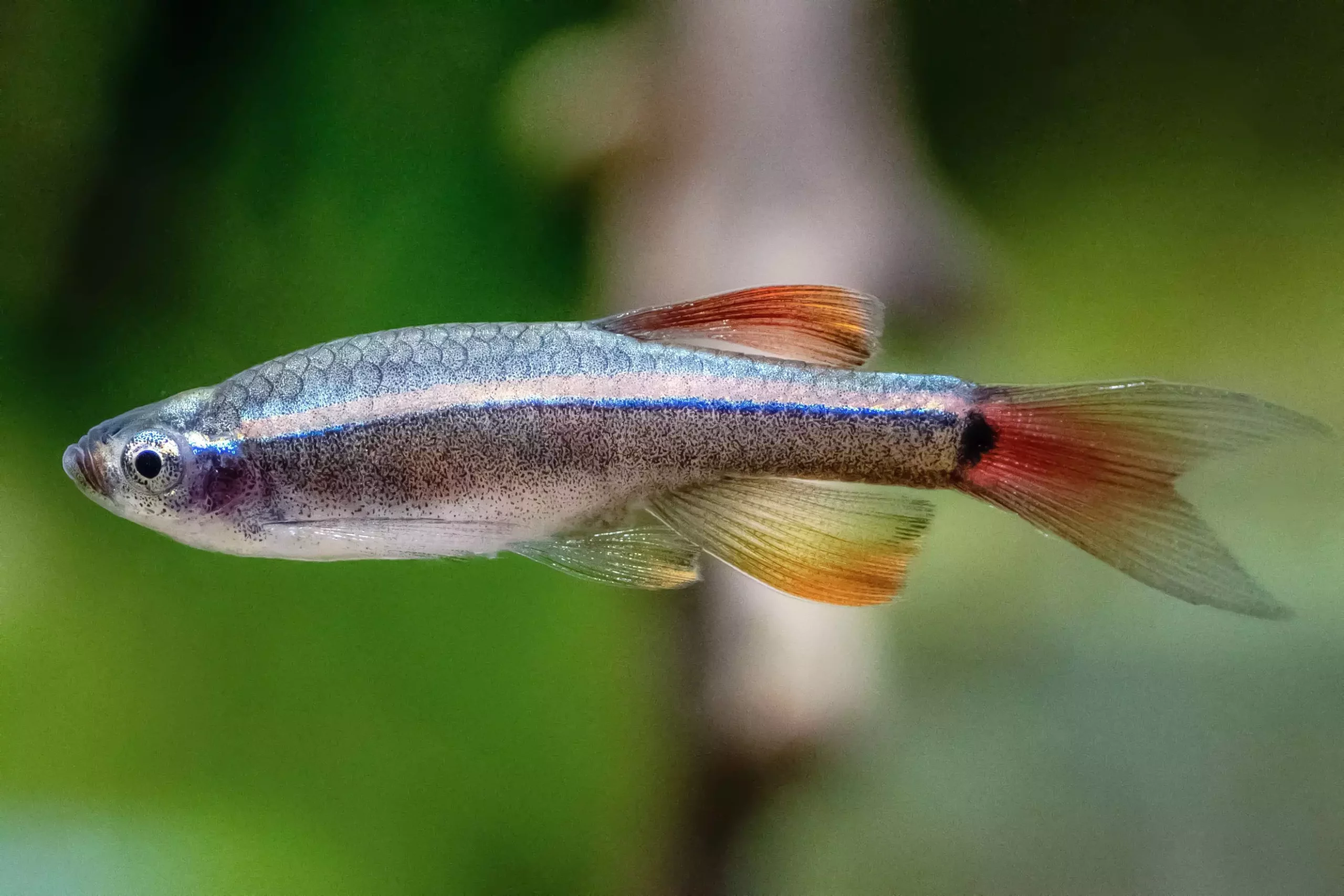The White Cloud Mountain minnow, scientifically known as Tanichthys albonubes, has long charmed aquarists and nature enthusiasts alike. Often referred to as “the working man’s neon,” this small yet vibrant fish has an intriguing history and uniquely fascinating traits. Initially celebrated for its striking colors akin to those of neon tetras, its affordability made it a staple in home aquariums. However, this species’ rarity in the wild and commendable qualities make it worth exploring for both novice and experienced fishkeepers.
For more than fifty years, Tanichthys albonubes was the sole member of its genus; however, in 2001, two relative species—Tanichthys micagemmae and Tanichthys thacbaensis—were identified in Vietnam. Despite this classification, only the Vietnamese white cloud, T. micagemmae, has made its way into the aquarium trade. The original species, T. albonubes, hails from the freshwater streams of southern China and northern Vietnam, where its evolutionary journey has been shaped by environmental changes.
Unfortunately, opportunities for T. albonubes to thrive in its natural habitat have diminished drastically. Habitat degradation and urban expansion led to its previous presumed extinction in the wild, particularly after the last sightings in the early 1980s. Remarkably, isolated populations have been rediscovered in select parts of China, specifically in Guangdong and Hainan Island, as well as in Quảng Ninh province of Vietnam. Although these populations are rare, conservation efforts are underway to rehabilitate the species and reintroduce captive-bred individuals into their native environments.
Adult White Cloud Mountain minnows generally reach a size of about 1.5 inches (approx. 4 centimeters) in length. Males typically display more vibrant colors and slender bodies than their female counterparts, who are bulkier, especially when they are filled with eggs. Their unique anatomical features include a distinguishing upward-angled mouth and a colorful body that shines a bronze-brown with a signature fluorescent line from the eye to the tail, culminating in a dark spot bordered by brilliant red. Additionally, different color morphs exist, including a rare golden variant and the long-finned meteor minnow.
These fish prefer the upper levels of the aquarium, actively swimming among plants and decorations rather than hiding at the bottom. Maintaining them in schools of six or more is highly recommended, as solitude tends to lead to stress and dull coloration. Their generally peaceful demeanor makes them well-suited to community tanks with other small, non-aggressive species. It’s essential, however, to avoid keeping them with larger or predatory fish, as White Cloud Mountain minnows could easily become prey.
Creating an ideal home for White Cloud Mountain minnows requires specific conditions. A well-planted tank with fine, darker substrate, smooth rocks, and driftwood is optimal. The lighting should be subdued to enhance the color display of these lively fish. An important factor to consider is temperature; they thrive in cooler water and are not adaptable to temperatures exceeding 72°F (22°C). It’s crucial to maintain stable water conditions and to avoid medications with copper, which is particularly harmful to this species.
Though they are hardy and can adapt to various water conditions, extreme fluctuations in pH and water hardness should be avoided. While White Cloud Mountain minnows are occasionally utilized as pond fish to help control mosquito populations, they cannot survive in freezing conditions. As such, proper environmental adaptations are vital to ensure their well-being.
White Cloud Mountain minnows are opportunistic feeders; they enjoy a diet of live, frozen, and flake foods, showing a fondness for insects such as mosquito larvae and brine shrimp. A varied diet is essential for maintaining their health and vibrancy. When it comes to breeding, these fish are relatively straightforward, making them a great choice for aspiring aquarists.
Sexual maturity is reached between 6 months and 1 year of age. Males will display colorful courtship behaviors in a contest for female attention, and conditions in the breeding tank should be optimal for spawning. Female minnows will scatter their eggs among aquatic plants or spawning mops, providing no parental care after the eggs are laid. The fry will hatch within 36 to 48 hours and thrive with appropriate micro foods or freshly hatched brine shrimp.
The enduring charm of White Cloud Mountain minnows lies not only in their coloration and peaceful demeanor but also in their significance to freshwater ecosystems and conservation efforts. Hobbyists have the unique opportunity to support these efforts through responsible breeding and maintenance of this beautiful species in their aquariums. By promoting awareness about their endangered status and participating in conservation initiatives, we can ensure that this delightful fish remains a part of aquatic life for generations to come. If you’re interested in learning more about White Cloud Mountain minnows or similar species, exploring additional fish breed profiles can provide valuable insights into the rich world of freshwater aquatics.


Leave a Reply